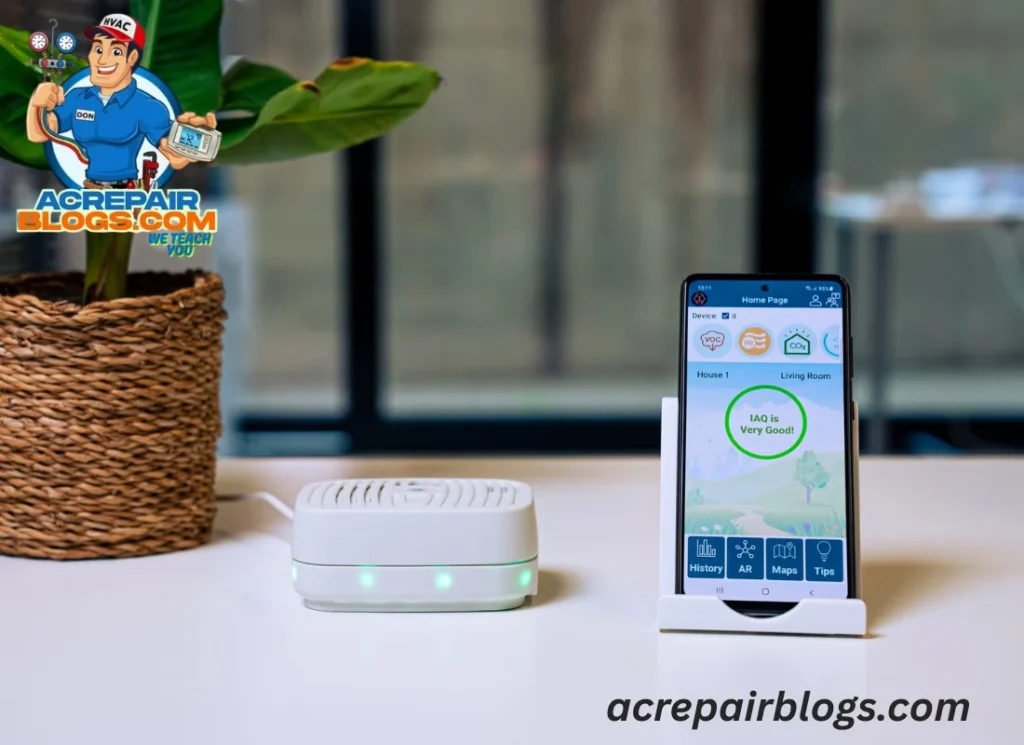Introduction
Air quality is an important point in houses. Whether you live in a busy city, near industrial areas, or simply spend most of your time indoors, the air you breathe directly impacts your health, comfort, and energy levels.
In this modern world, you can be facilitated with many technologies and gadgets. Analyzing the indoor air quality and help resolve the problems. Link your smartphones to home systems. Controlling home systems and connect with your smartphones.
- Why indoor air quality monitoring is essential.
- Features to look for in smart air quality devices.
- The best smart devices for 2025 to improve your home’s air quality.
- How to integrate these tools into your daily routine for a healthier, cleaner home.
Why Indoor Air Quality Monitoring Matters
Indoor areas can stop dust, polluted air, and harmful chemicals from furniture.
Health Impacts of Poor Air Quality
- Short-term: Headaches, allergies, eye irritation, throat dryness, and fatigue.
- Long-term: Asthma, respiratory diseases, cardiovascular problems, and reduced immune response.
While using smart air solutions like filters and purifiers, you can:
- Identify pollutants early
- Adjust ventilation and filtration
- Maintain healthier air for your family
- Save energy by knowing when to run purifiers or HVAC systems efficiently
Key Features to Look for in Smart Air Quality Devices
- Pollutant Detection Range
- Real-Time Alerts
- App & Smart Home Integration
- Data Tracking & Insights
- Portability & Design
Best Smart Devices for Monitoring Indoor Air Quality in 2025
Here is the list:
- Awair Element
- Why It is Great: A sleek, Wi-Fi-connected monitor that measures temperature, humidity, CO₂, VOCs, and fine dust (PM2.5).
Key Features:
- App dashboard with detailed data and personalized recommendations
- Smart home integrations with Alexa, Google Assistant, and IFTTT
- Good design and LED will help you with regulatory air quality checkups.
- Best For: Families who want easy-to-understand data with actionable tips.
2. Airthings View Plus
- Why It is Great: Known for accuracy, especially with radon detection, a feature most devices skip.
Key Features:
- Tracks PM2.5, VOCs, CO₂, humidity, temperature, and radon
- E-ink display for at-a-glance readings without consuming much power
- Long battery life (up to 2 years)
- Best For: Homeowners worried about long-term pollutants like radon in basements or older homes.
3. IQAir AirVisual Pro
- Why It is Great: Combines air quality monitoring with outdoor AQI data for a full picture.
Key Features:
- Measures PM2.5, CO₂, humidity, and temperature
- Displays global outdoor air quality comparisons via Wi-Fi
- Large, bright screen with detailed graphs
- Best For: Urban homeowners exposed to outdoor pollution who want comparisons between inside and outside air.
4. Dyson Purifier Cool Formaldehyde TP09
- Why It is Great: A two-in-one solution that monitors and purifies air simultaneously.
- Key Features:
- Detects and destroys formaldehyde (from paints, furniture, and household products)
- HEPA + activated carbon filtration
- Works as a cooling fan while cleaning the air
- Best For: People who want an all-in-one air quality monitor and purifier for large spaces.
5. Foobot Air Quality Monitor
- Why It is Great: Budget-friendly, compact, and highly effective for VOCs and particulate matter.
Key Features:
- Detects PM2.5, PM10, VOCs, humidity, and temperature
- LED color indicators for quick readings
- Console with the smart home system to indicate the purifier automatically.
- Best For: Budget-conscious homeowners looking for simple, reliable monitoring.
6. Amazon Smart Air Quality Monitor
- Why It is Great: Affordable and integrates seamlessly with Alexa.
Key Features:
- Monitors PM2.5, VOCs, CO₂, humidity, and temperature
- Works with Alexa routines (e.g., “turn on air purifier when VOCs rise”)
- Minimalist design, easy setup
- Best For: Smart home users already invested in the Alexa ecosystem.
7. Temtop M2000 2nd Gen
- Why It is Great: Professional-grade accuracy in a portable device.
Key Features:
- Measures PM2.5, PM10, CO₂, formaldehyde, and more
- Rechargeable battery for portability
- Real-time LCD display for instant feedback
- Best For: On-the-go air quality testing or landlords monitoring rental units.
The Future of Indoor Air Quality Monitoring
Looking ahead, HVAC trends are moving toward integrated clean air solutions:
- HVAC systems with built-in smart sensors
- AI-driven purifiers that learn your habits
- Wearable air quality trackers for personal health insights
By 2025 and beyond, indoor air monitoring will likely be as common as smoke detectors in homes.
Conclusion
Air quality is the basis of a comfortable home. With rising awareness of pollution, allergens, and chemical exposure indoors, investing in smart clean air solutions is no longer a luxury; it is a necessity.
From comprehensive devices like the IQAir AirVisual Pro to budget-friendly monitors like the Amazon Smart Air Quality Monitor, there is a solution for every household and budget.
The key is consistency: use these devices daily, track your indoor environment, and combine them with smart purifiers or HVAC upgrades. After some time, you will notice improved comfort, reduced allergy symptoms, and peace of mind knowing you’re breathing cleaner air.
